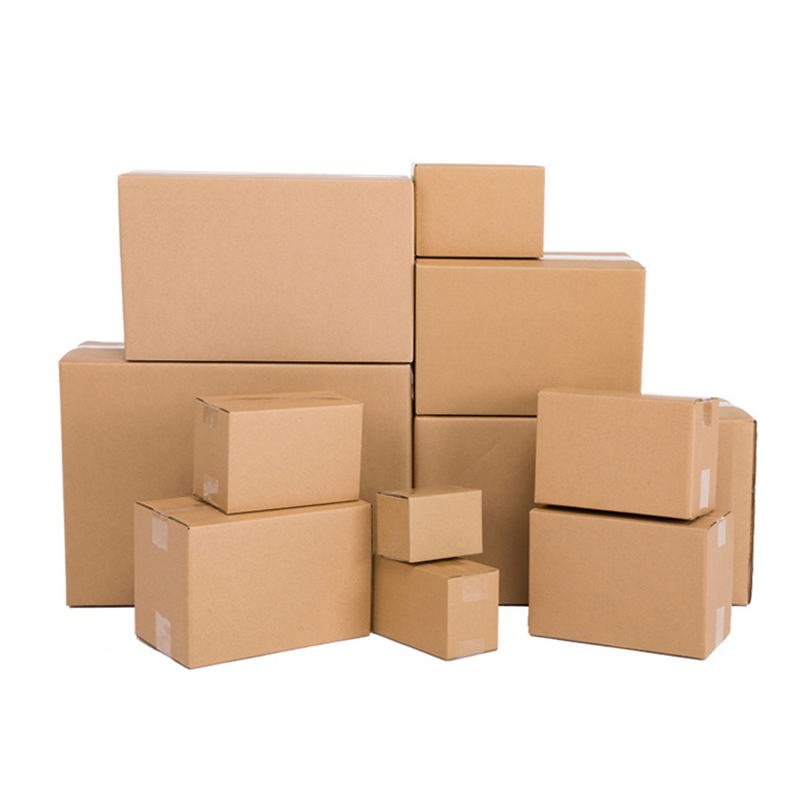1. Definition
Corrugated Board consists of at least two layers of material: box board on the surface (face paper/inside paper) and corrugated base paper pressed into a wavy shape in the middle (core paper).Its production needs to go through the "base paper softening → corrugating → bonding" process, through high-pressure steam and hot plate to ensure that the layers are firmly bonded.
?
Corrugated board is made of box board paper and corrugated paper, which can be divided into three layers, five layers and seven layers according to the number of layers. Different structures are suitable for different scenes.
?
?
2. Overview of corrugated box life cycle
The life cycle of corrugated boxes refers to a complete closed-loop process from raw material acquisition, production and manufacturing, product use to waste recycling or disposal, covering the dynamic balance of environmental impact, economic value and social demand.
?
About 500 billion corrugated boxes are produced every year in the world, and China accounts for more than 40%, making it the largest producer and consumer.
?
Raw material (pulp) production and carton manufacturing account for more than 65% of the total energy consumption in all lifecycle stages, while the recycling stage can reduce carbon emissions by 35%.
?
Driven by the e-commerce industry, the average service life of corrugated boxes in the world has been shortened from 1-2 cycles of traditional logistics to 0.5 times (the proportion of single-use has increased).
?
3. Raw materials and production: resource dependence and technological innovation
The starting point of the life cycle involves pulp acquisition, paperboard processing and carton molding. The core contradiction is the balance between resource sustainability and capacity expansion.
?
Key trends
Raw material structure: 80% of the world's corrugated base paper comes from recycled pulp. China's import restrictions on waste paper (completely banned from 2021) have promoted the replacement of wood pulp and the domestic waste paper recycling rate to 90%.
?
Upgrading of production technology: The penetration rate of intelligent production lines is increased, such as digital twin technology, the capacity utilization rate of head enterprises is more than 85%, and energy consumption is reduced by 15%-20%;RFID tags and digital printing technology drive customized production and reduce order response time by 30%.
?
Data
In 2024, China's corrugated box production capacity increased by 6.6%, and it is expected that the new capacity will expand at an average annual growth rate of 5% from 2025 to 2030, but the elimination rate of backward production capacity will reach 12%/ year due to stricter environmental regulations.
?
4. Consumption and usage: demand-driven and scenario differentiation
In the middle link from factory to waste, the demand structure determines the life cycle efficiency of the product, and the scene difference affects the resource consumption intensity.
?
Demand drivers
- Increase in the proportion of e-commerce logistics: The annual growth rate of global e-commerce packaging demand is 12%, China's e-commerce carton demand accounts for 13%, and consumers are willing to pay a 10%-15% premium for environmentally friendly packaging.
?
- High-end and functional: New energy vehicles, consumer electronics and other fields promote the demand for high-end corrugated boxes, such as waterproof, buffer, intelligent tracking (RFID) function products market share increased by 8%.
?
- Regional differences: The per capita consumption of corrugated boxes in European and American markets reaches 120kg/ year, and China only 32kg/ year, but the growth potential is significant, and the per capita consumption is expected to exceed 50kg in 2030.
?
5. Recycling and circulation: policy promotion and industry bottleneck
The end point of the life cycle and the key of the closed loop involve the recycling system, recycling technology and policy supervision.
?
Key trends
Policy driven: China's 14th Five-Year Plan for Circular economy requires that the proportion of recyclable express packaging applications reach 30% by 2027, and the EU's Packaging and Packaging Waste Directive (PPWD) mandates that the carton recycling rate reach 90% by 2030.
?
Technical bottleneck: Multiple recycling results in the decrease of pulp fiber strength, and 15%-20% primary wood pulp needs to be added to maintain the performance. The cost of bio-based coatings (such as PLA coating film) is 15% higher than that of traditional PE, which limits the large-scale application.
?
Data
The global recycling rate of corrugated boxes is about 75%, and 92% in China (2024), but the difference in the quality of recycled pulp results in the high-end market still relying on imported wood pulp.
?
6. Comparison of global market lifecycle management
Different regions form differentiated life cycle management models due to industrial base, policy orientation and consumption habits.
?
Regional differences
- China: With "capacity expansion + recycling closed loop" as the core, the policy promotes the research and development of green packaging technology (such as degradable pulp and lightweight design), and the replacement rate of bio-based materials is targeted at 12% by 2025.
?
- Europe and the United States:?Focus on "reduction + recycling design", such as Germany to implement "packaging deposit system", American enterprises pilot foldable and reusable corrugated boxes (life increased to more than 5 times).
?
- Emerging markets: In regions such as India and Southeast Asia, due to the low penetration rate of e-commerce (<5%), traditional logistics dominates. The life cycle of cartons mainly follows a linear model of "production - landfill", with a recycling rate of less than 40%.
?



